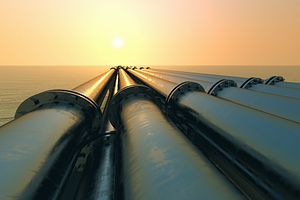Can ASEAN build an integrated energy market, one that is “less volatile, more flexible and resilient” courtesy of “regional cooperation such as infrastructure connectivity, trade and investment arrangement, and the harmonization of regulatory and technological framework[s],” as envisioned by the Economic Research Institute for ASEAN and East Asia?
The ASEAN Council on Petroleum (ASCOPE) has proposed in its revised Masterplan 2008 to connect ten member states together via a linked energy superhighway of pipelines currently under construction, with five slated to be finished by 2020, equaling more than 9820 km of pipeline, and costing upwards of $17 billion. Sounds promising, but with one problem: there has been little discussion of the regional cooperation needed to make this happen. And the necessary steps – a dialogue to coordinate trans-regional harmonization of legal structures, and the fanning of executive powers for the ASEAN Secretariat – remain elusive.
Over-promising timetables for such an important project is as much a threat to ASEAN energy security as is the energy imbalance that now exists between producers and importers. For example, Thailand’s Chulalongkorn University, and its ASEAN Energy Market Integration group, argue that ASEAN-member states might lose interest and look elsewhere for investment and cooperation if the stalled intra-ASEAN energy process leaves a community of 600 million, the world’s fifth largest economy by GDP, without a clear plan of action yet with so much already in place.
ASEAN will require, the International Energy Agency’s World Energy Report of 2013 forecasts, a staggering $1.7 trillion of cumulative investment in energy supply infrastructure, to become both a leading supplier and a hub of energy, by 2035. Such developments could rekindle the region’s drooping growth rates and expected slowdown, and advert supply scarcity in the long-term.
Already, ASEAN already has 3,020 km worth of pipeline built across the region, according to Francoise Nicholas, of the think tank the French Institute of International Relations, based in Brussels. Further investment, in the form of actually connecting the pipelines together and forming a regional body to not only administer and arbitrate, but also to coordinate R&D and maintain low price levels through efficient supply channels, could be a huge boon to regional cooperation.
But Basil Constantinescu, the Special Advisor to ASEAN from the EU, argues that while 80 percent is great, many stakeholders realize the other 20 percent will be much harder to achieve. Specifically, to accomplish the remaining 20 percent will require ASEAN to learn from the experiences of the European Union, North American Free Trade Area, Mercado Comun del Sur, and the Central Asia region. Adoracion Navarrob and Maxensius Tri Sambodoc have detailed this in their paper on “The Pathway to ASEAN Energy Market Integration” for the Chulalongkorn project.
They argue that liberalization, not harmonization, could be an effective tool to circumnavigate any timidity or trepidation in the region. Indeed, the thought of changing one’s energy regulatory structure on a national level, with the hope that your regional neighbor will play by the same rules, is murky. Liberalization means that rather than make laws similar to another, difficult given the diversity of common and civil law institutions in the region, the price-mechanism would be better: fewer subsidies for public energy firms and rules that strengthen the separation of the transmission and distribution of energy by allowing consumers to choose their energy supplier. Perhaps this approach would allow for a freer supply of energy.
George Lerner is a Special Lecturer at Chulalongkorn University, Bangkok and has worked with the ASEAN Secretariat.

































